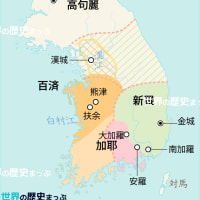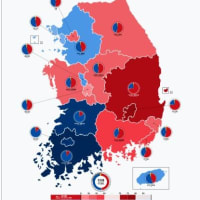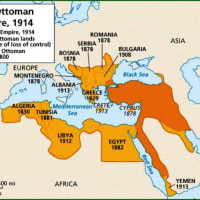円キャリートレードが巻き戻されるなら、今の世界は終わる:Greg Peel 2006年6月15日
Greg Peel: It’s The End Of The World As We Know It, If The Yen Carry Trade Is Unwound - FN Arena News - June 15 2006
By Greg Peel
"The entire global financial system is on the verge of disintegration, as the result of the imminent collapse of the yen carry trade." Daily Telegraph (UK), 24th February."
The multiplier effect of the blowout of the carry trade is going to mean that the crisis hits with a magnitude far beyond any individual nation or currency. This will bring down the whole post-Bretton Woods floating exchange rate system." Lyndon LaRouche, political economist, same day.
Blog after blog on the net, whether respected or otherwise, have gone into overdrive this year in anticipation of events that will see an unwinding of the yen carry trade. As the sample of opinions above attest to, such a development is not being taken with a pinch of salt. What, then, is the yen carry trade?
About three months ago, the Bank of Japan made an historic announcement: it was prepared to start raising interest rates shortly, maybe even as early as June. In the scheme of things, this hardly seems momentous, given just about every nation's central bank, from the US to Australia, through Europe, Asia, South America and beyond, has turned to policies of monetary tightening recently in order to ward off the effects of global inflation. In Japan's case, however, there is definitely a fundamental difference.
It has been described, in fact, as "a pivotal moment in modern financial history". The reason is that Japan is the second biggest economy in the world, and Japan's short term interest rates have been as good as 0% all of this century. It is past Japanese monetary policy that has given rise to the yen carry trade.
Effectively, the Bank of Japan (BOJ) was handing out free money. Its intention was to bring Japan out of a decade of deflationary depression, and spur on Japanese bank investment. The reality was, however, that the BOJ became the bank to the world. Global investors could borrow money at less than one percent and then invest in US treasuries at increasingly higher interest rates. Provided the currency remained relatively stable, and the BOJ constantly intervened to see that it did, investors were laughing all the way to the bank. It was as good as a free profit.
And it didn't stop at US treasuries. A few points of spread will never be enough if other opportunities are available. Thus bond markets in high cash-rate countries such as New Zealand, Brazil, Australia and even Iceland became depositories for the free money. Why stop at bond markets? Real estate, from London to Shanghai to Sydney to Miami became a target. High risk emerging markets offering substantial returns are less of a risk if your cost of funds is negligible.
Then came the China phenomenon. Suddenly commodities were on the move and the super cycle thesis was born. Gold started to climb as well, with particular attention being given to new forms of speculative gold investment available as listed finds. Forget jewellery demand and global tension. Experienced gold watchers around the world were shaking their heads in disbelief at the weight of pure investment money hitting the metal. As China surged, similar base metal investment vehicles were introduced. Suddenly all the world was a speculator.
Global stock markets were also moving. Investors poured into commodity-backed bourses as metal price increases drove earnings increases which drove share prices from miners to truck tyre manufacturers. Australian mining analysts were floored. Against every fibre of their being and all their life experience they could only continually re-rate Australian mining stocks on the back of raging spot prices.
Although demand/supply fundamentals were clearly a force behind the commodity rally, the pure hysteria of the rally was put down to a matter of sheer liquidity. Since the US has tried to restart its economy after the tech crash, and Europe needed to spur on growth, money has been cheap and the world has been, as so many commentators have noted, "awash with liquidity". And nowhere was money cheaper than in Japan.
Banks, mutual funds, insurance groups, pension funds and hedge funds the world over have exploited the availability of liquidity, and exploited the yen carry trade. No asset class has been left out, as speculative bubbles have developed in emerging markets, metals, gold, real estate, art – you name it.
David Bloom, currency analyst at HSBC has said that the yen carry trade has every single instrument imaginable, so when it comes to an end at the end of this year "It's going to be ugly". Why will it come to an end? It's all about QE and ZIRP.
The BOJ has for years maintained monetary polices of quantitative easing (QE) and a zero interest rate policy (ZIRP). Quantitative easing has meant that the BOJ has excessively printed money in order to defeat the deflation that has cast a pall over the Japanese economy for nearly two decades. The zero interest rate policy was intended to provide an impetus for domestic investment, as previously noted.
Japan has begun to see light at the end of the tunnel. As a result, QE has ended. Next step is the end of ZIRP, which commentators are expecting to happen anytime soon. This will mean the free money will no longer be free, and that means the spread between funds borrowed and potential return will narrow. It also means the yen will be allowed to rally against the US dollar beyond the previous range of interventory control by the BOJ. This will serve to diminish, or even wipe out, carry trade profits.
The doomsayers suggest that the end of ZIRP and a subsequent rally in the yen will trigger a cascading speculative sell-off in every asset previously subject to the liquidity bubble. Foremost in their minds is the fact that this has actually happened before.
Back in 1998, hedge funds were still a relatively new concept. But hedge funds that were around at the time had poured into yen carry trades with a specific target in mind. Since the fall of the Berlin Wall, Russian debt had taken on junk bond status. Spectacular returns were to be had by buying Russian debt at silly yields and financing with almost zero yen borrowings. As long as the debt was ultimately honoured, it was a bet to nothing.
Problem was, Russia defaulted. Massive paper profits became massive crystallised losses overnight. Speculators climbed over each other to pay back their yen exposures and the yen rallied 20% in less than two months. One of the US' biggest hedge funds, Long Term Capital Management, collapsed with billions owed to a string of respectable US investment banks. The Fed had to step in and prevent financial catastrophe by shoring up the system with cash. Otherwise the domino effect may have seen the collapse of the whole world financial system.
At the time, the powers that be in Washington, Tokyo and Berlin were all but oblivious to what had been happening. What is the yen carry trade? How big is it? How much leverage is involved? Hedge funds suddenly became something of the evil empire. Legislate against them! was the cry.
Obviously the world has learnt from1998. Are you kidding? No way! Here we are again.
This time, the yen carry trade is not just the exclusive domain of a handful of large hedge funds. It is the domain of hundreds of hedge funds, large and small, and of mutual funds, managed funds, pension funds and individual investors. Funds come under the restriction of all sorts of legislation, disclosure requirement, and risk management necessity. It is hard to see a repeat of the debacle of 1998. Or is it?
In March this year, two weeks after the announcement by the BOJ that ZIRP may soon be lifted, credit-rating service Fitch downgraded the sovereign debt of Iceland. Iceland had been running short term rates as high as 10.75% and as such had attracted plenty of interest from yen carry traders.
Iceland's stock market plunged 20% in one day. The Icelandic krona fell 8% in two days. Reverberations were felt as far away as New Zealand, South Africa, Hungary and Brazil as attention turned to other high-yielding currencies. Australia also came under scrutiny and the Aussie started to slide.
This event, as well as the Russian experience, has been held up by doomsayers as evidence that the financial world is on a precipice.
Fueeling the fear is the fact that nobody knows exactly just how big the yen carry trade is. The BOJ doesn't know. Nor does the Fed, the World Bank or the IMF. Estimates range from hundreds of billions (of US dollars) to trillions.
Popular blogger Michael "Mish" Shedlock has been republished all across the web with his publication last week of "Nightmare Carry Trade Scenario". Shedlock argues that the perfect storm of events that would spell potential financial disaster would be (1) the end of QE, (2), the end of ZIRP, (3), rising interest rates in Europe, (4) falling interest rates in the US, (5) tightening credit in the US and (6) a rising yen against the US dollar.
(1) is done, (2) is set to happen, (3) is happening. (4) is clearly not happening, and (5) has not yet showed signs of happening. (6) will happen as a result of (1), (2) and particularly (4).
Greg Peel: It’s The End Of The World As We Know It, If The Yen Carry Trade Is Unwound - FN Arena News - June 15 2006
By Greg Peel
"The entire global financial system is on the verge of disintegration, as the result of the imminent collapse of the yen carry trade." Daily Telegraph (UK), 24th February."
The multiplier effect of the blowout of the carry trade is going to mean that the crisis hits with a magnitude far beyond any individual nation or currency. This will bring down the whole post-Bretton Woods floating exchange rate system." Lyndon LaRouche, political economist, same day.
Blog after blog on the net, whether respected or otherwise, have gone into overdrive this year in anticipation of events that will see an unwinding of the yen carry trade. As the sample of opinions above attest to, such a development is not being taken with a pinch of salt. What, then, is the yen carry trade?
About three months ago, the Bank of Japan made an historic announcement: it was prepared to start raising interest rates shortly, maybe even as early as June. In the scheme of things, this hardly seems momentous, given just about every nation's central bank, from the US to Australia, through Europe, Asia, South America and beyond, has turned to policies of monetary tightening recently in order to ward off the effects of global inflation. In Japan's case, however, there is definitely a fundamental difference.
It has been described, in fact, as "a pivotal moment in modern financial history". The reason is that Japan is the second biggest economy in the world, and Japan's short term interest rates have been as good as 0% all of this century. It is past Japanese monetary policy that has given rise to the yen carry trade.
Effectively, the Bank of Japan (BOJ) was handing out free money. Its intention was to bring Japan out of a decade of deflationary depression, and spur on Japanese bank investment. The reality was, however, that the BOJ became the bank to the world. Global investors could borrow money at less than one percent and then invest in US treasuries at increasingly higher interest rates. Provided the currency remained relatively stable, and the BOJ constantly intervened to see that it did, investors were laughing all the way to the bank. It was as good as a free profit.
And it didn't stop at US treasuries. A few points of spread will never be enough if other opportunities are available. Thus bond markets in high cash-rate countries such as New Zealand, Brazil, Australia and even Iceland became depositories for the free money. Why stop at bond markets? Real estate, from London to Shanghai to Sydney to Miami became a target. High risk emerging markets offering substantial returns are less of a risk if your cost of funds is negligible.
Then came the China phenomenon. Suddenly commodities were on the move and the super cycle thesis was born. Gold started to climb as well, with particular attention being given to new forms of speculative gold investment available as listed finds. Forget jewellery demand and global tension. Experienced gold watchers around the world were shaking their heads in disbelief at the weight of pure investment money hitting the metal. As China surged, similar base metal investment vehicles were introduced. Suddenly all the world was a speculator.
Global stock markets were also moving. Investors poured into commodity-backed bourses as metal price increases drove earnings increases which drove share prices from miners to truck tyre manufacturers. Australian mining analysts were floored. Against every fibre of their being and all their life experience they could only continually re-rate Australian mining stocks on the back of raging spot prices.
Although demand/supply fundamentals were clearly a force behind the commodity rally, the pure hysteria of the rally was put down to a matter of sheer liquidity. Since the US has tried to restart its economy after the tech crash, and Europe needed to spur on growth, money has been cheap and the world has been, as so many commentators have noted, "awash with liquidity". And nowhere was money cheaper than in Japan.
Banks, mutual funds, insurance groups, pension funds and hedge funds the world over have exploited the availability of liquidity, and exploited the yen carry trade. No asset class has been left out, as speculative bubbles have developed in emerging markets, metals, gold, real estate, art – you name it.
David Bloom, currency analyst at HSBC has said that the yen carry trade has every single instrument imaginable, so when it comes to an end at the end of this year "It's going to be ugly". Why will it come to an end? It's all about QE and ZIRP.
The BOJ has for years maintained monetary polices of quantitative easing (QE) and a zero interest rate policy (ZIRP). Quantitative easing has meant that the BOJ has excessively printed money in order to defeat the deflation that has cast a pall over the Japanese economy for nearly two decades. The zero interest rate policy was intended to provide an impetus for domestic investment, as previously noted.
Japan has begun to see light at the end of the tunnel. As a result, QE has ended. Next step is the end of ZIRP, which commentators are expecting to happen anytime soon. This will mean the free money will no longer be free, and that means the spread between funds borrowed and potential return will narrow. It also means the yen will be allowed to rally against the US dollar beyond the previous range of interventory control by the BOJ. This will serve to diminish, or even wipe out, carry trade profits.
The doomsayers suggest that the end of ZIRP and a subsequent rally in the yen will trigger a cascading speculative sell-off in every asset previously subject to the liquidity bubble. Foremost in their minds is the fact that this has actually happened before.
Back in 1998, hedge funds were still a relatively new concept. But hedge funds that were around at the time had poured into yen carry trades with a specific target in mind. Since the fall of the Berlin Wall, Russian debt had taken on junk bond status. Spectacular returns were to be had by buying Russian debt at silly yields and financing with almost zero yen borrowings. As long as the debt was ultimately honoured, it was a bet to nothing.
Problem was, Russia defaulted. Massive paper profits became massive crystallised losses overnight. Speculators climbed over each other to pay back their yen exposures and the yen rallied 20% in less than two months. One of the US' biggest hedge funds, Long Term Capital Management, collapsed with billions owed to a string of respectable US investment banks. The Fed had to step in and prevent financial catastrophe by shoring up the system with cash. Otherwise the domino effect may have seen the collapse of the whole world financial system.
At the time, the powers that be in Washington, Tokyo and Berlin were all but oblivious to what had been happening. What is the yen carry trade? How big is it? How much leverage is involved? Hedge funds suddenly became something of the evil empire. Legislate against them! was the cry.
Obviously the world has learnt from1998. Are you kidding? No way! Here we are again.
This time, the yen carry trade is not just the exclusive domain of a handful of large hedge funds. It is the domain of hundreds of hedge funds, large and small, and of mutual funds, managed funds, pension funds and individual investors. Funds come under the restriction of all sorts of legislation, disclosure requirement, and risk management necessity. It is hard to see a repeat of the debacle of 1998. Or is it?
In March this year, two weeks after the announcement by the BOJ that ZIRP may soon be lifted, credit-rating service Fitch downgraded the sovereign debt of Iceland. Iceland had been running short term rates as high as 10.75% and as such had attracted plenty of interest from yen carry traders.
Iceland's stock market plunged 20% in one day. The Icelandic krona fell 8% in two days. Reverberations were felt as far away as New Zealand, South Africa, Hungary and Brazil as attention turned to other high-yielding currencies. Australia also came under scrutiny and the Aussie started to slide.
This event, as well as the Russian experience, has been held up by doomsayers as evidence that the financial world is on a precipice.
Fueeling the fear is the fact that nobody knows exactly just how big the yen carry trade is. The BOJ doesn't know. Nor does the Fed, the World Bank or the IMF. Estimates range from hundreds of billions (of US dollars) to trillions.
Popular blogger Michael "Mish" Shedlock has been republished all across the web with his publication last week of "Nightmare Carry Trade Scenario". Shedlock argues that the perfect storm of events that would spell potential financial disaster would be (1) the end of QE, (2), the end of ZIRP, (3), rising interest rates in Europe, (4) falling interest rates in the US, (5) tightening credit in the US and (6) a rising yen against the US dollar.
(1) is done, (2) is set to happen, (3) is happening. (4) is clearly not happening, and (5) has not yet showed signs of happening. (6) will happen as a result of (1), (2) and particularly (4).




























※コメント投稿者のブログIDはブログ作成者のみに通知されます